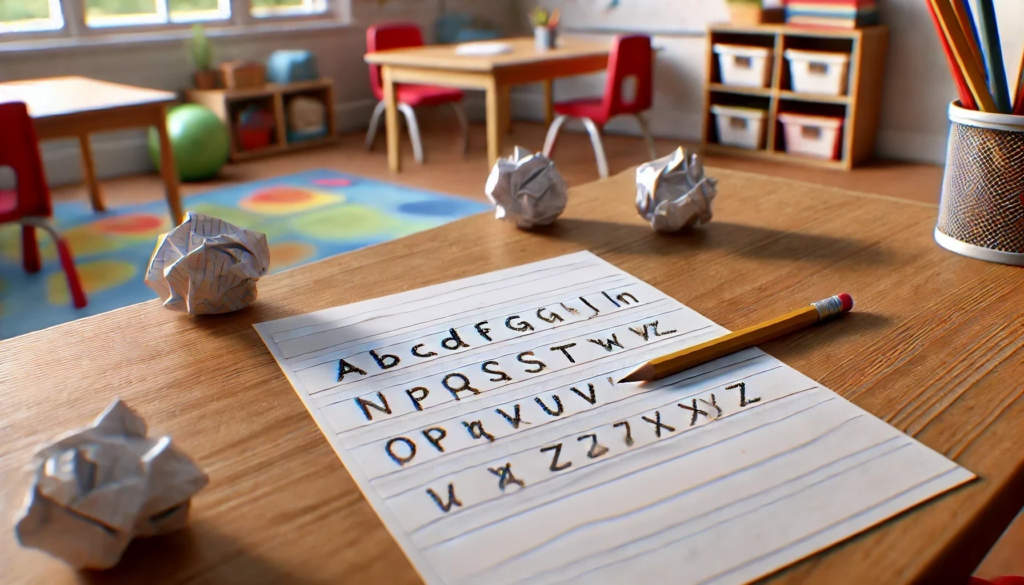Beth Ann Rosica: Keyboard kids and the death of handwriting

Call me old-fashioned, I still enjoy handwritten cards of any kind, but especially thank you notes. Unfortunately, handwritten notes seem to be dying out.
Over the years, cursive instruction has been eliminated in most public schools. Many students today not only cannot write cursive, they cannot read it either. Many will never read the original Declaration of Independence because of this.
Children don’t learn to sign their full name, and most kids don’t think it’s a big deal because they use their phone or tablet for almost everything.
School is no exception. Since the massive school closures in 2020, classes have been moved to an online platform. In most school districts across the country, every student receives a technological device of some sort. Even in elementary schools, children have an iPad or Chromebook to complete much of their work.
Proponents of this model, in which students sit in a real classroom but complete their assignments on a device, believe it helps prepare them for the real world. Those of us who complain are labeled as out of touch with reality or just plain old.
But there are other reasons to be concerned about over-reliance on technology in the classroom. Research shows that the ability to write letters and words manually is causally linked to reading and comprehension. One study even shows that the process of printing letters affects an area of the brain associated with reading literacy.
“The imaging results showed that children who had printed the letters had greater activation in the left fusiform gyrus (an area of the brain) in letter perception than children who had learned the letters without printing exercises.” (Emphasis added)
A later study confirmed the findings that brain activity is different in children who learn to write by hand than in those who learn to write by tracing or using a keyboard.
There is “evidence of direct neural connections between the quality of handwriting – a skill closely associated with higher-level writing and reading skills – and the neural processing underlying phonological processing that is thought to be causally related to reading acquisition.”
These studies are from 2012 and 2014, and yet schools are relying more and more on technology to replace writing instruction. There are probably countless reasons, but much like with reading science, it seems irresponsible for schools to ignore the evidence.
Due to abysmal reading scores across the state, Pennsylvania has proposed a law that would require school districts to offer evidence-based reading instruction. In 2023, just over 50 percent of all elementary school public school students will be proficient in reading.
Legislators and schools should consider combining evidence-based reading instruction with writing instruction.
One such program, Size Matters, was started by a local occupational therapist, Dr. Beverly Moskowitz, because she was “drowning in handwriting referrals.” She began teaching special education students, and when she saw their handwriting skills rapidly improving, she knew she was onto something.
Her teaching focused on the Size of the letter, and not on the formation every single letter.
“I started experimenting with variables that seemed to give me more impact, such as focusing on letter size versus letter shape. I observed that the children caught on very quickly. Correcting errors in letter size made an immediate and visible difference in the appearance of their written pages. Since there were only three sizes, rather than 62 shapes (e.g., uppercase, lowercase, and numbers), it was super easy and super quick to teach. And when the children focused on letter size, the shape took care of itself.”
She continued her experiments with regular first-grade students and the results were even better.
“The first grade teacher flagged me down later that day and told me that everyone’s print letters had changed as soon as I left the room. Even crazier, she caught up with me again later that week. A mother called her and confessed that she had scolded her daughter for being so irresponsible and bringing home someone else’s workbook. She didn’t recognize her own daughter’s print letters.”
It was at this point that Dr. Moscowitz decided to expand Size Matters, and subsequent research studies have shown that her program works.
“Eventually, I began to formalize, conceptualize and test my observations. In the largest study ever conducted on handwriting, my assumption was confirmed. Letter size is key. That is why we say that when it comes to clean printing, Size matters!”
A study conducted by Temple University found that “results…support the use of a curriculum-integrated handwriting program.”
A program that is easy to implement for ordinary classroom teachers can remove all obstacles to teaching manual writing in the classroom.
Given the research on the impact of handwriting on reading proficiency, it seems important for schools to get back to basics, get out paper and pen, and start teaching writing using an evidence-based model—especially given current literacy scores across the state.
And if teachers see their students succeeding in handwriting, maybe we can bring back the elusive cursive so that children can learn to sign their names, write a thank-you note, or read our country’s founding documents in their original language – although that may be asking too much.
Beth Ann Rosica lives in West Chester, holds a doctorate in education, and has spent her career advocating for the interests of at-risk children and families. She reports on educational issues for Wide + freedom. Contact her at [email protected].



